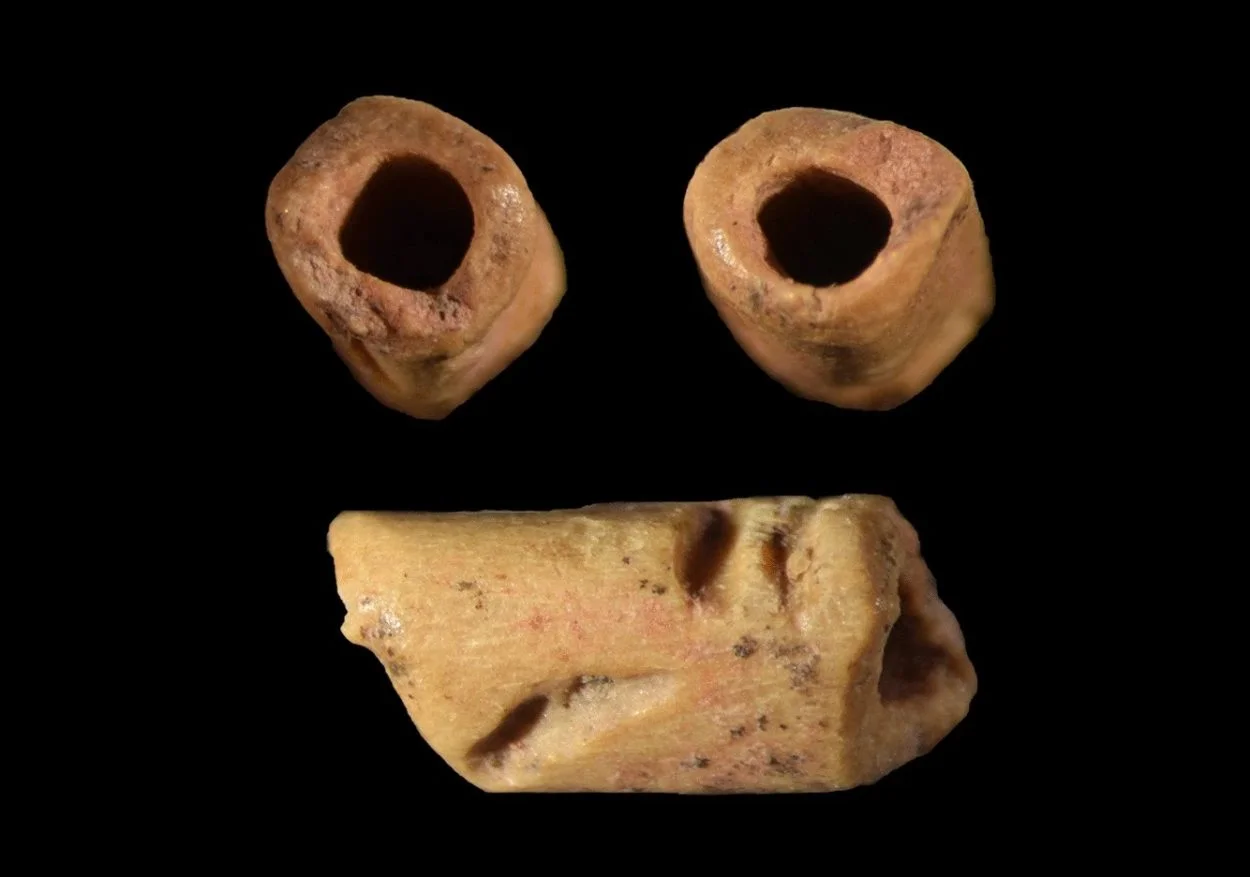Archaeologists from the University of Wyoming have discovered the oldest known bead in the Americas at the La Prele Mammoth site in Converse County, United States.
The La Prele Mammoth site contains the preserved remains of a killed or scavenged sub-adult Columbian mammoth, in addition to traces of a hunting campsite where the animal was butchered.
Recent excavations, the results of which are published in the peer-reviewed journal Scientific Reports, have uncovered a Clovis bead that was manufactured from a hare (Lepus sp.) bone.
The bead measures 7mm in length by 1.6mm and was likely worn as a decorative item on clothing. Both ends of the bead are smoothed and polished, while the surface has a layer of red ochre.
Grooves found on the outside of the bead are consistent with creation by humans, either with stones or their teeth. To determine the origin of the bone bead, the UW researchers used the bone’s collagen to conduct a mass spectrometry analysis.
This revealed that the hare bone was made from either a metapodial (the bones connecting the phalanges of the digits to the more proximal bones of the limb) or a proximal phalanx (a bone present in the fingers and toes of humans and other vertebrates).
According to the study: “This finding represents the first secure evidence for the use of hares during the Clovis period, which refers to a prehistoric era in North America, particularly prominent about 12,000 years ago. It’s named after the Clovis archaeological site in New Mexico, where distinctive stone tools were discovered.”
Header Image Credit : University of Wyoming





